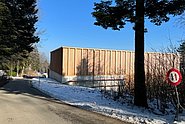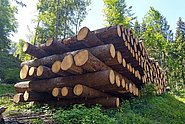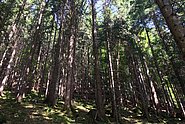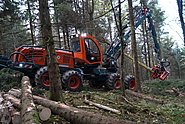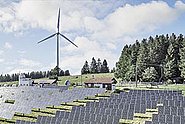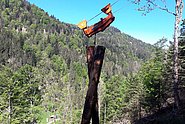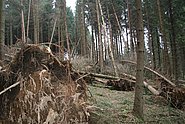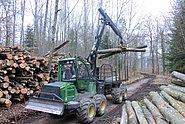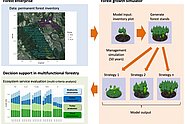Close-to-nature forestry (CNF) is considered an effective strategy to adapt forests to climate change while sustaining ecosystem services and biodiversity (BES). However, for forest management it remains unclear whether current CNF strategies sufficiently reduce forests' predisposition to climate-change-induced shifts in disturbance regimes. To address this increasing complexity, we introduce the integration of a climate-sensitive forest gap model with assessments of predisposition to fire, bark beetle, and windthrow disturbances, as well as BES provision. We conducted simulations for a forest enterprise in the Central Swiss Alps, covering a large elevation gradient, under three climate scenarios (historical, SSP2–4.5, and SSP5–8.5). The simulations additionally considered six management strategies, including CNF variants with different management intensities and climate-adapted approaches. Our results indicate that climate change will dynamically alter disturbance predisposition across elevation gradients. Site-related predisposition to fire and bark beetle infestation generally increased under climate change, while stand-related predisposition to all disturbances varied with climate scenario and elevation. Under moderate warming (SSP2–4.5), stand-related predisposition to fire and windthrow increased across all elevations. In contrast, under severe warming (SSP5–8.5), long-term reductions in stand-related predisposition to fire, bark beetle infestation, and windthrow occurred at lower elevations due to climate-change-induced shifts in forest dynamics, while predisposition increased at higher elevations with improved growing conditions. Our results further show that increasing management intensity generally reduces stand-related disturbance predisposition but focusing purely on disturbance mitigation can also lead to trade-offs, such as reduced BES provision. We conclude that climate-adapted forest management must account for both stand-related and site-related predisposition to prioritize disturbance-prone 'hotspots', especially in areas of high BES value. Proactively reducing disturbance predisposition may involve trade-offs regarding BES provision but may be crucial to avoid potential BES losses from severe disturbances. As climate change may alter trade-offs between BES and disturbance mitigation, we underscore the need for decision support systems in long-term forest planning to account for conflicting management objectives.
See DOISee Institutional Repository DORA



